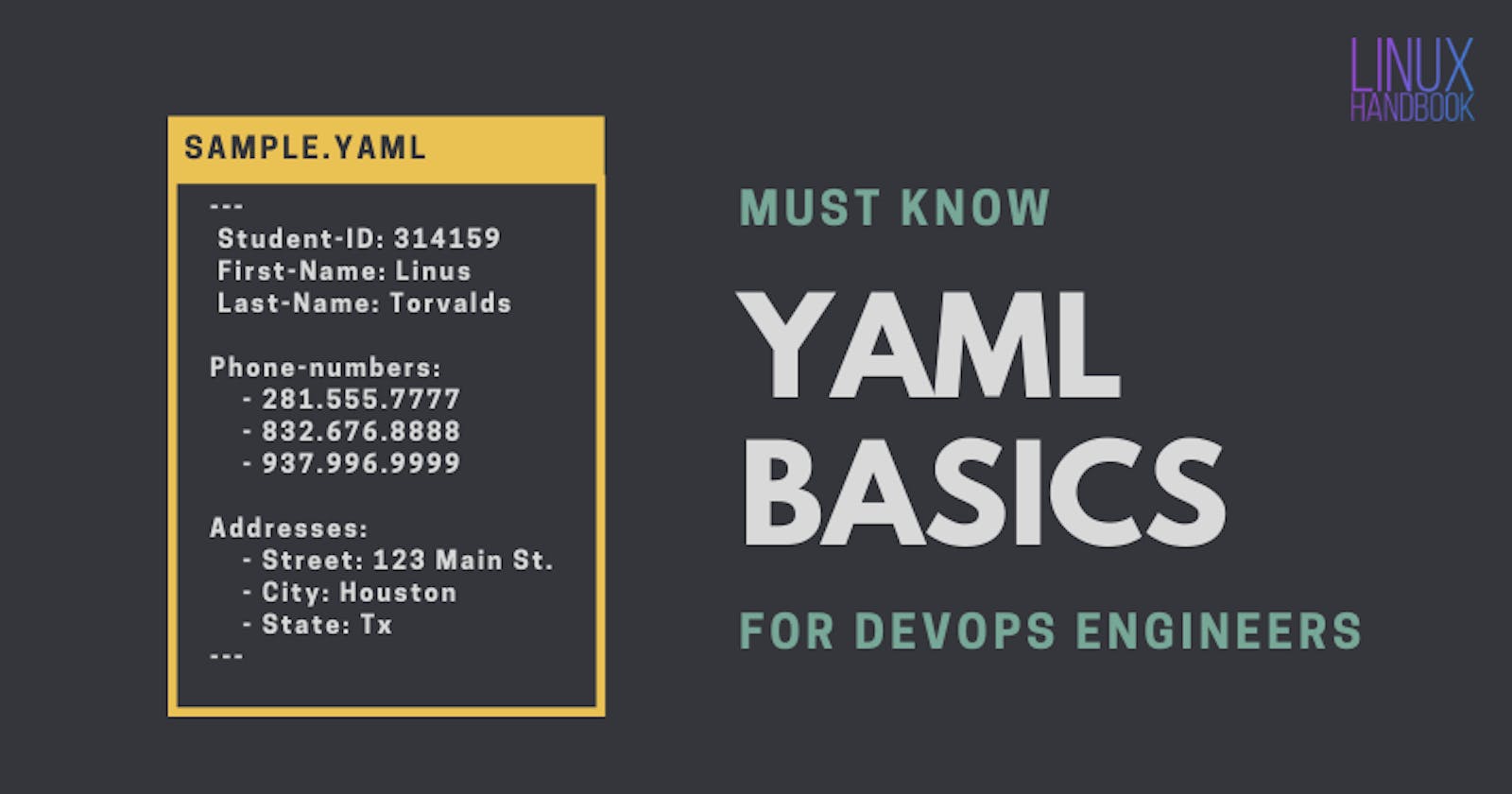Welcome to Day 75 of the #100DaysOfDevOps Challenge! Today we will see about Basic Syntax's in YAML Language
Elements of a YAML file: Basic syntax
A YAML file is used to describe data. In a YAML file the content is all about a collection of key-value pairs where the value can be anything ranging from a string to a tree.
Let us understand it by an example. This is a Kubernetes service manifest file.
kind: Service
metadata:
name: web-app-svc
spec:
type: NodePort
ports:
- port: 8080 #service port
targetPort: 8080 #Pod Port
nodePort: 30012 #Node Port from the range - 30000-32767
selector:
app: web-app
It's self explainable that it's a set of key value pair elements: Name: Value.
As you can see from the file above, a YAML file is constructed of a number of different elements. Together, they can be used to describe a wide variety of structures.
Indentation is used to denote structure. Tabs are not allowed and the amount of whitespace doesn't matter as long as the child node is more indented than the parent.
UTF-8, UTF-16 and UTF-32 encodings are allowed.
1. Spaces or indentation
In YAML, you indent with whitespace, not tabs. And there MUST be a space between elements.
Correct specification:
Kind: Service
Incorrect specification:
Kind:Service
Because there is no space after the colon in the above statement!
2. Comments in YAML
Comments in YAML can be defined by placing a hash in front of an item '#'. Comments can be made at the start of a line of anywhere in the line.
Here's an example.
#Configuring the port
ports:
- port: 8080 #service port
targetPort: 8080 #Pod Port
nodePort: 30012 #Node Port from the range - 30000-32767
As you can see, it has one single line comment and three inline comments.
3. Scalar (key-value)
Scalars are the strings and numbers that make up the data on the page. In simple terms they are the key value pairs.
kind: Service
metadata:
name: web-app-svc
4. Collections & Lists
List and collection elements or members are the lines that begin at the same indentation level, starting with a dash followed by a space.
- web-app-prod
- prod-deployments
- prom-monitored
It is a basic list with each item in the list placed in its own line with an opening dash.
5. Nested collections
If you want to create a nested sequence with items and sub-items, you can do so by placing a single space before each dash in the sub-items.
-
- web-app-prod
- prod-deployments
- prom-monitored
-
- web-app-test
- staging-deployments
- not-monitored
6. Dictionaries
Dictionaries comprise a key: value format with contents indented.
ports:
- port: 8080 #service port
targetPort: 8080 #Pod Port
nodePort: 30012 #Node Port from the range - 30000-32767
You can merge and mix-up collections of lists and dictionaries like this:
ports:
- port: 8080 #service port
targetPort: 8080 #Pod Port
nodePort:
- 30012
- 30013
- 30014
These are very basic concepts of YAML but essential for a DevOps engineer.
You don't need special editor for YAML. Your favorite text editor should already be supporting YAML or use a plugin if required.
